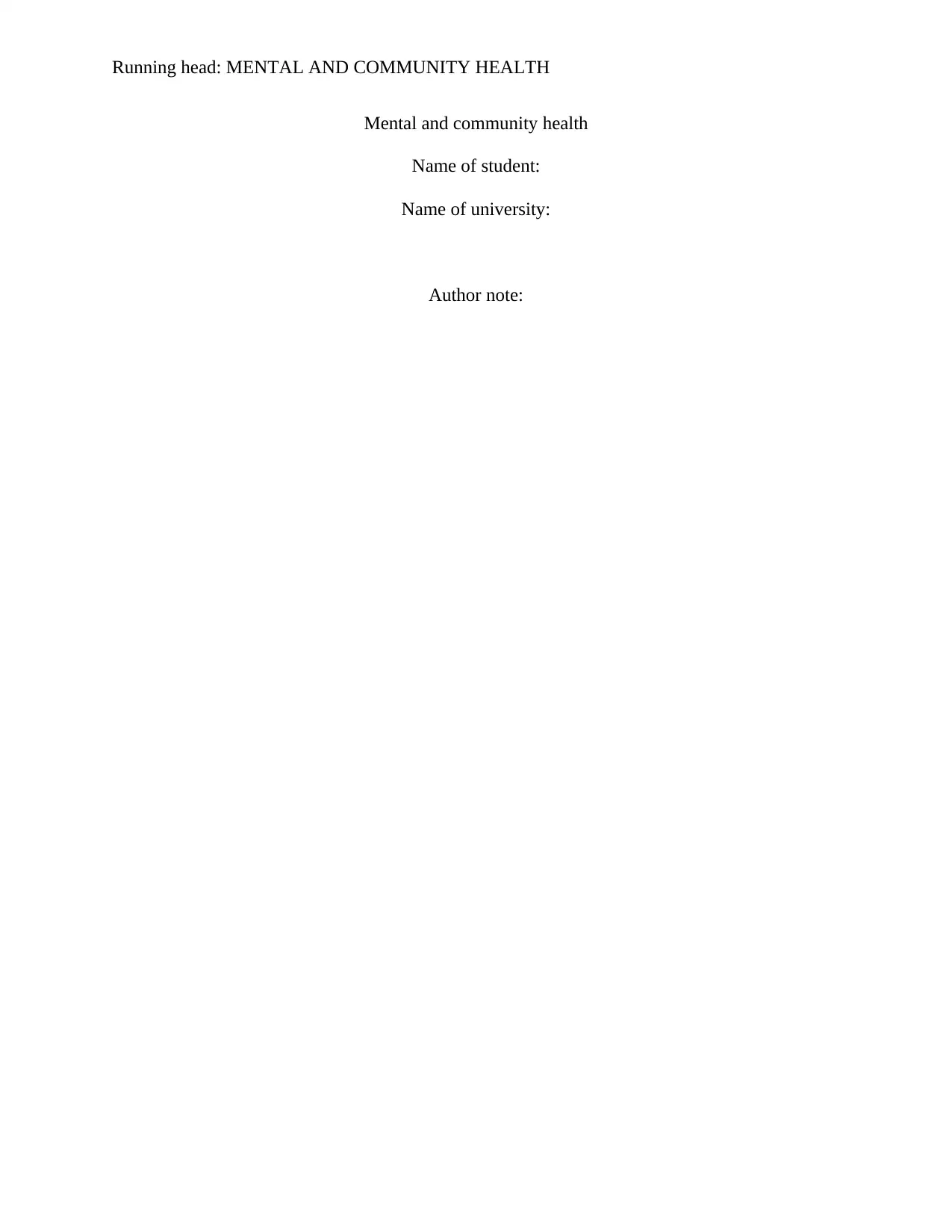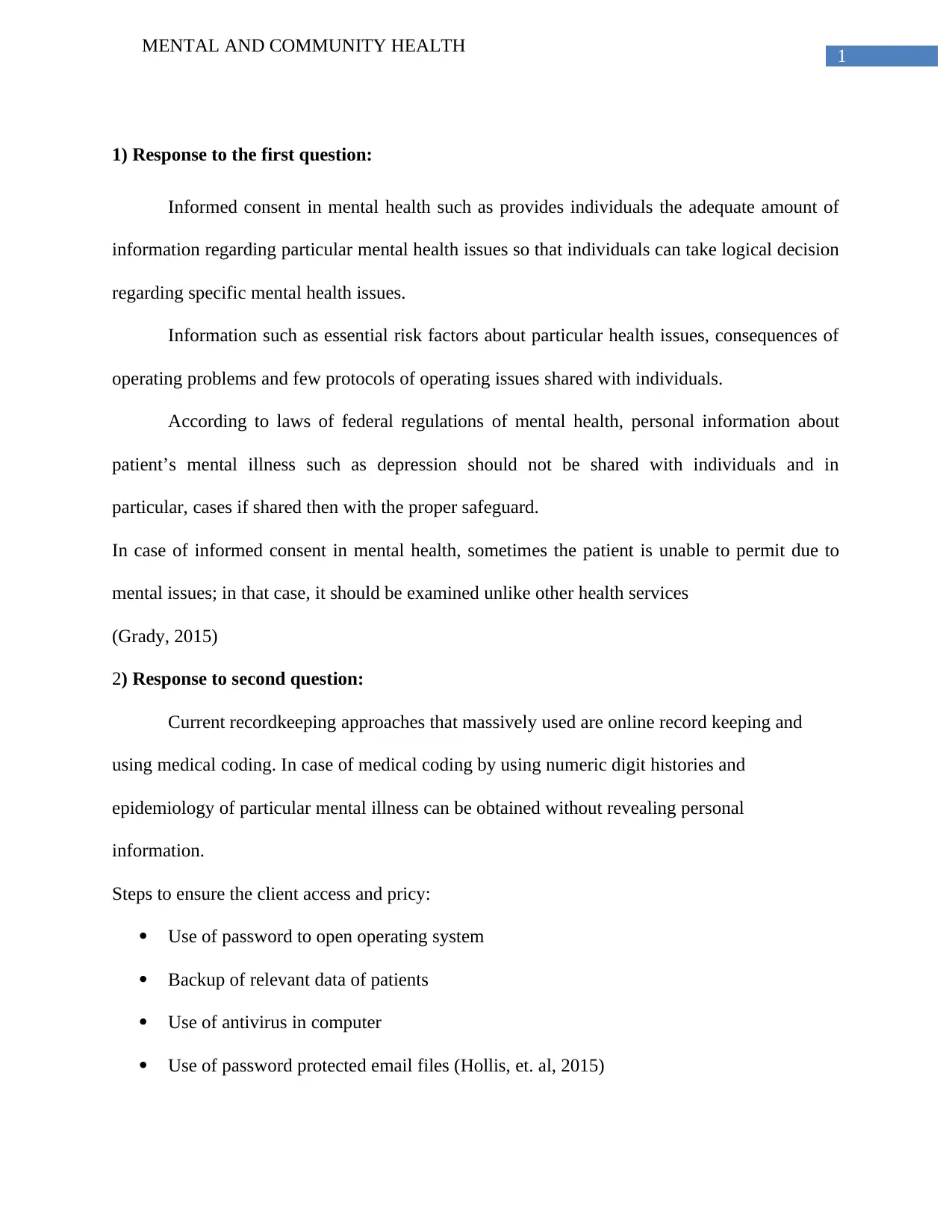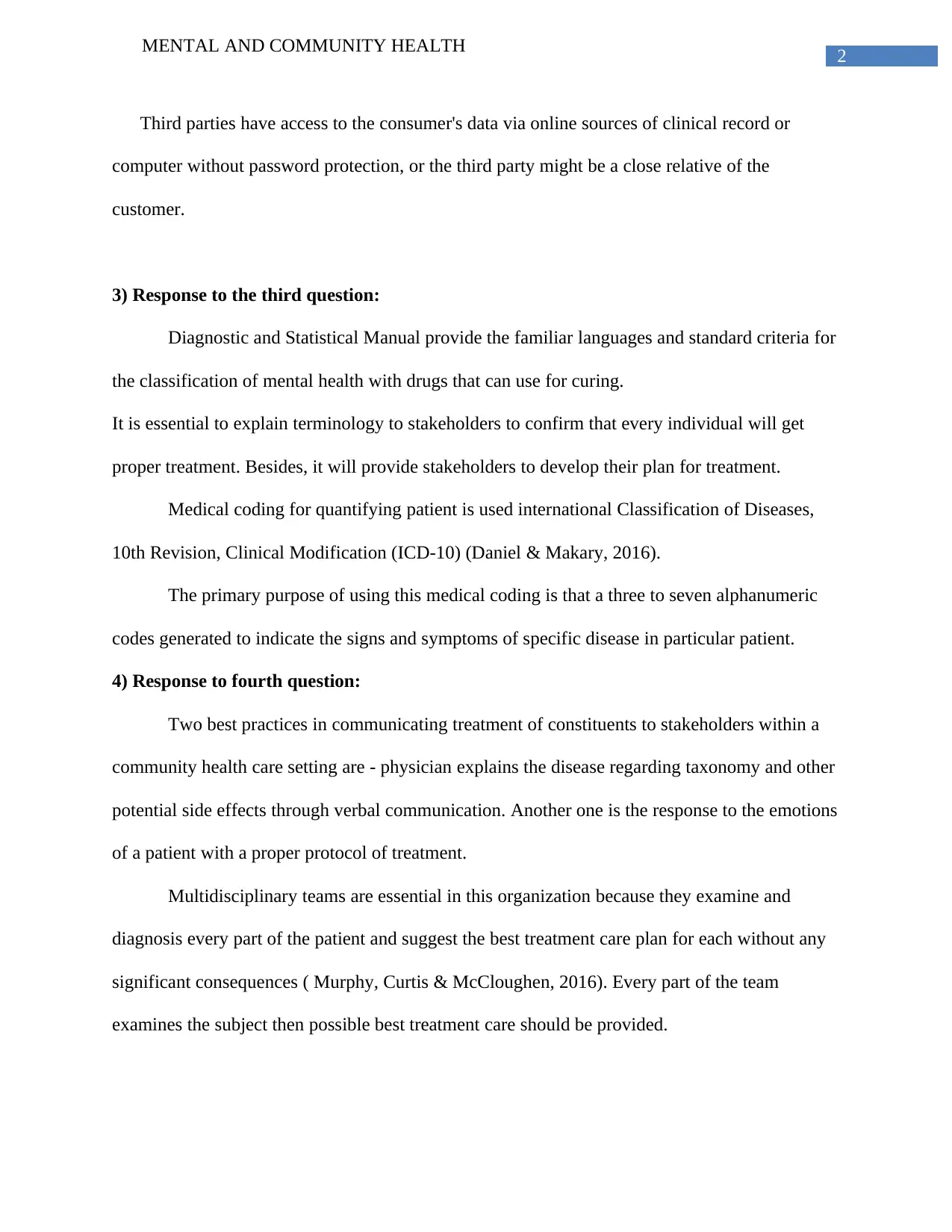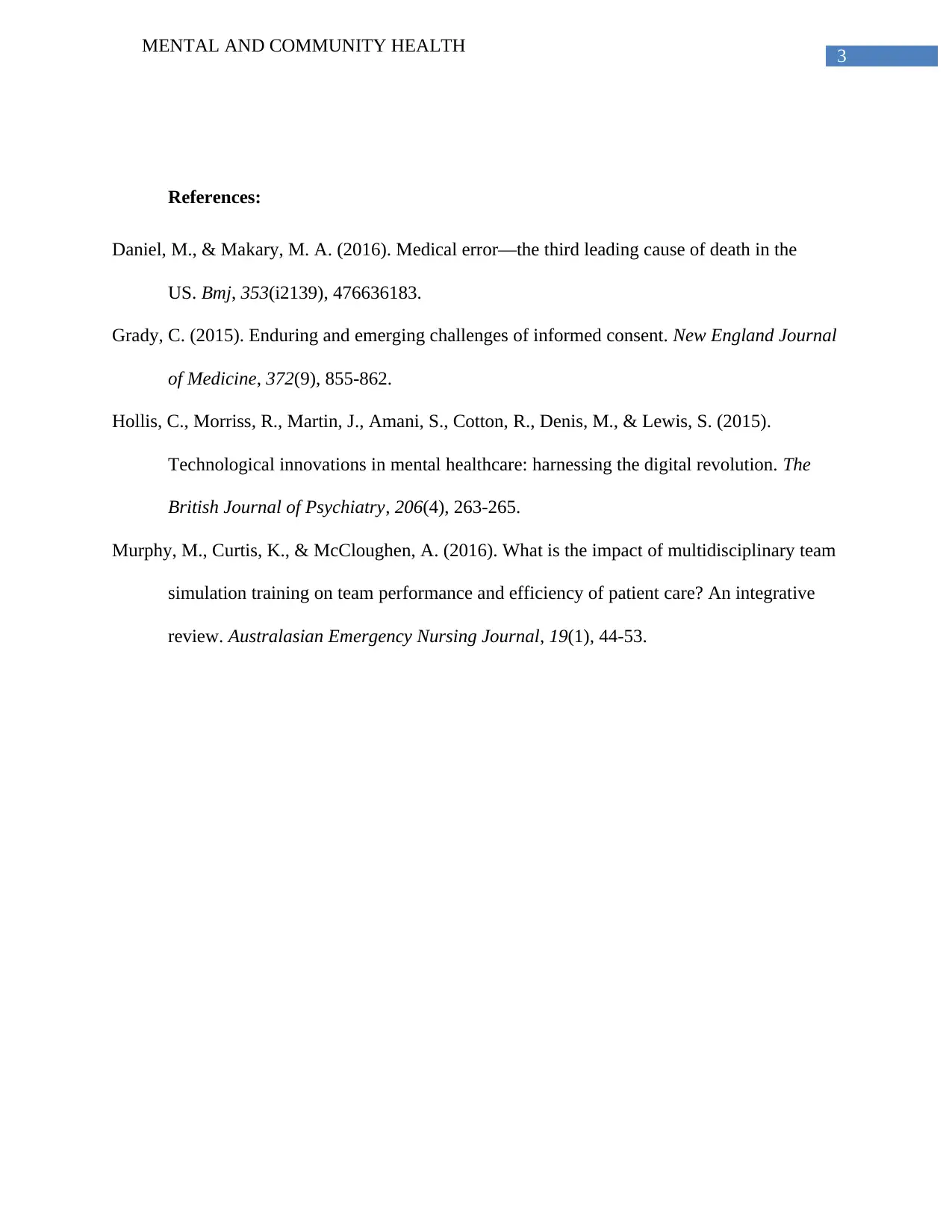Mental and Community Health: Short Answer Questions Assignment
VerifiedAdded on 2023/06/10
|4
|714
|269
Homework Assignment
AI Summary
This assignment addresses key concepts in mental and community health through short answer questions. It explores informed consent, detailing its role, federal regulations, and distinctions from other health services. The assignment also examines current recordkeeping approaches, including online systems and medical coding, alongside measures for ensuring client access and privacy. Furthermore, it explains the use of the Diagnostic and Statistical Manual (DSM), the importance of terminology for stakeholders, and the medical coding used for quantifying services. Finally, the assignment discusses best practices in communicating treatment to stakeholders and emphasizes the significance of multidisciplinary teams in community healthcare settings. The solution is designed to provide comprehensive insights into these critical aspects of mental and community health.
1 out of 4











![[object Object]](/_next/static/media/star-bottom.7253800d.svg)